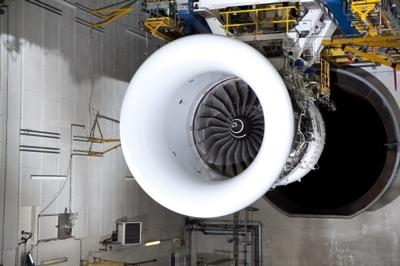Thu, Sep 16, 2021
AD 2021-17-11 Requires Initial And Repetitive Borescope Inspections (BSIs) Of The Affected IPC R1 Blades
The FAA is adopting a new airworthiness directive (AD) for certain Rolls-Royce Deutschland Ltd & Co KG (RRD) Trent XWB-75, Trent XWB-79, Trent XWB-79B, and Trent XWB-84 model turbofan engines.

This AD was prompted by reports of cracks in the intermediatepressure compressor (IPC) rotor 1 (R1) blades installed on certain Trent XWB model turbofan engines. This AD requires initial and repetitive borescope inspections (BSIs) of the affected IPC R1 blades and, depending on the results of the inspections, replacement of all 34 IPC R1 blades. The FAA is issuing this AD to address the unsafe condition on these products. This AD is effective October 12, 2021.
Supplementary Information: The FAA issued a notice of proposed rulemaking (NPRM) to amend 14 CFR part 39 by adding an AD that would apply to certain RRD Trent XWB-75, Trent XWB-79, Trent XWB-79B, and Trent XWB-84 model turbofan engines. The NPRM published in the Federal Register on May 28, 2021 (86 FR 28716). The NPRM was prompted by reports of cracks in the IPC R1 blades installed on certain Trent XWB model turbofan engines. The NPRM proposed to require initial and repetitive BSIs of the affected IPC R1 blades and, depending on the results of the inspections, replacement of all 34 IPC R1 blades with parts eligible for installation. The FAA is issuing this AD to address the unsafe condition on these products.
The European Union Aviation Safety Agency (EASA), which is the Technical Agent for the Member States of the European Community, has issued EASA AD 2020-0277, dated December 11, 2020 (referred to after this as “the MCAI”), to address the unsafe condition on these products. The MCAI states:
- Occurrences have been reported of finding cracked IPC R1 blades on certain Trent XWB engines that were close to their first planned refurbishment shop visit.
- This condition, if not corrected, could lead to blade failure and consequent engine inflight shut-down (IFSD), possibly resulting in reduced control of the aeroplane.
- To address this potential unsafe condition and avoid dual engine IFSD, Rolls-Royce issued the inspection NMSB to provide inspection instructions and the NMSB to provide information on threshold and intervals.
- For the reasons described above, this [EASA] AD requires repetitive inspections of the affected parts and, depending on findings, accomplishment of applicable corrective action(s).
You may obtain further information by examining the MCAI in the AD docket at www.regulations.gov by searching for and locating Docket No. FAA-2021-0381.
More News
19-Year-Old Pilot Was Attempting to Fly Solo to All Seven Continents On his journey to become the first pilot to land solo on all seven continents, 19-year-old Ethan Guo has hit a >[...]
From 2017 (YouTube Edition): A Quality LSA For Well Under $100k… Aeroprakt unveiled its new LSA at the Deland Sport Aviation Showcase in November. Dennis Long, U.S. Importer>[...]
Hazardous Weather Information Summary of significant meteorological information (SIGMET/WS), convective significant meteorological information (convective SIGMET/WST), urgent pilot>[...]
Aero Linx: Historic Aircraft Association (HAA) The Historic Aircraft Association (HAA) was founded in 1979 with the aim of furthering the safe flying of historic aircraft in the UK>[...]
"We would like to remember Liam not just for the way he left this world, but for how he lived in it... Liam was fearless, not necessarily because he wasn't afraid but because he re>[...]
 TikToker Arrested After Landing His C182 in Antarctica
TikToker Arrested After Landing His C182 in Antarctica Classic Aero-TV: Versatile AND Practical - The All-Seeing Aeroprakt A-22 LSA
Classic Aero-TV: Versatile AND Practical - The All-Seeing Aeroprakt A-22 LSA ANN's Daily Aero-Term (06.27.25): Hazardous Weather Information
ANN's Daily Aero-Term (06.27.25): Hazardous Weather Information ANN's Daily Aero-Linx (06.27.25)
ANN's Daily Aero-Linx (06.27.25) Aero-News: Quote of the Day (06.27.25)
Aero-News: Quote of the Day (06.27.25)



